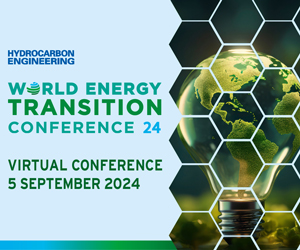Welcome to the world of innovative bioenergies.
Every waste management challenge becomes an opportunity.
Our mission: to transform the ordinary into extraordinary energy.
For an optimal experience, please enable JavaScript and disable any ad blockers. This allows us to provide you with effective and sustainable solutions. Through the valorization of biomasses, we convert organic waste into renewable energy. Together, we are building a greener and more responsible future.

The city of Ann Arbor, known for its commitment to the environment and innovation, plans to create its own renewable energy network. This initiative aligns with a desire to reduce the city’s carbon footprint and promote sustainable energy sources. By investing in green technologies, Ann Arbor aims to become a model for energy transition for other municipalities.
Why does Ann Arbor want to develop a renewable energy network?
The primary objective of Ann Arbor is to reduce its dependence on fossil fuels and minimize its environmental impact. By developing a renewable energy network, the city can ensure a clean and sustainable energy source while also stimulating the local economy by creating green jobs. Furthermore, this approach enhances the energy resilience of the community in the face of fluctuations in traditional energy markets.
According to a recent study, the capacity of renewable energies in the United States has significantly increased over the last decade, demonstrating the feasibility and benefits of such a transition. By adopting these technologies, Ann Arbor can not only help combat climate change but also inspire other cities to follow suit.
What types of renewable energy will be integrated into the network?
The Ann Arbor network will include several sources of renewable energy to ensure diversified and stable energy production. Among the main sources considered are:
- Solar energy: Installation of photovoltaic panels on public buildings and available spaces to capture sunlight.
- Wind energy: Installation of small wind turbines adapted to Ann Arbor’s urban context.
- Geothermal energy: Utilizing ground heat to heat public and residential buildings.
- Biomass: Valorization of organic waste to produce energy, thus contributing to the city’s waste management.
This diversification maximizes renewable energy production while minimizing risks related to an excessive dependence on a single source. Furthermore, the integration of these technologies will rely on best practices observed in other regions, such as Germany’s reorganization of cost-sharing for integrating renewable energies into the grid.
What are the economic and environmental benefits for Ann Arbor?
The development of a renewable energy network presents numerous advantages for Ann Arbor, both economically and environmentally. Economically, this initiative can attract investments in the green technology sector and create new jobs related to the construction, maintenance, and management of energy infrastructures. Additionally, by reducing long-term energy costs, the city can achieve substantial savings while offering more competitive rates to its residents.
Environmentally, the transition to renewable energy helps reduce greenhouse gas emissions, thus contributing to the fight against climate change. Moreover, by promoting the use of local and sustainable resources, Ann Arbor reduces its ecological footprint and strengthens its local biodiversity.
Another important aspect is the improvement of air quality. By replacing polluting energy sources with clean alternatives, the city can provide a healthier environment for its residents, reducing the risks of respiratory diseases and other health issues related to pollution.
How does Ann Arbor plan to fund this ambitious project?
The funding for the development of the renewable energy network in Ann Arbor will come from several sources. The city plans to combine public funds, government grants, and private partnerships to cover initial costs and ensure the project’s long-term viability.
Available federal and state grants will play a crucial role in financially supporting this project. For instance, similar initiatives in the United States have benefited from favorable legislative measures that encourage investments in renewable energy. Furthermore, partnerships with local businesses and nonprofit organizations can provide additional financial support and technical expertise.
The city also plans to involve the community through crowdfunding programs and tax incentives to encourage residents and businesses to invest in renewable energy infrastructures. This collaborative approach allows costs to be shared and strengthens citizen involvement in the project.
What challenges might Ann Arbor encounter in establishing this network?
The realization of a renewable energy network in Ann Arbor comes with several challenges. One of the main obstacles is the high initial cost of the necessary infrastructures, despite the long-term savings they may generate. Additionally, the installation of new technologies may require significant adaptations to existing infrastructures, which can lead to delays and additional costs.
Another major challenge is community acceptance and engagement. For the project to succeed, it is essential that local residents and businesses support the initiative and participate actively. This requires transparent communication and awareness campaigns to inform the public of the benefits and opportunities associated with the energy transition.
Finally, managing the intermittency of renewable energy sources, such as solar and wind, poses a technical challenge. Ann Arbor will need to invest in energy storage systems, such as batteries, to ensure stable and continuous energy supply. Innovative solutions in energy storage, like the 1 MW battery storage unit unveiled by Atlas Copco, will be crucial to overcoming this obstacle.
What impact will this project have on the local community?
The development of a renewable energy network in Ann Arbor will have a significant positive impact on the local community. First and foremost, it will contribute to improving quality of life by reducing air pollution and creating a healthier environment. Additionally, the creation of new jobs in the renewable energy sector will invigorate the local economy and provide new professional opportunities for residents.
The project will also strengthen the sense of community by fostering collaboration among citizens, businesses, and local authorities. Initiatives such as training workshops, conferences, and open house events will further raise public awareness of energy and environmental issues.
Moreover, Ann Arbor will be able to attract new businesses and talents in the field of green technologies, consolidating its position as a center of innovation and sustainable development. This increased attractiveness will contribute to economic growth and enhance the city’s reputation on the national and international stage.
What are the next steps for developing the network?
The implementation of the renewable energy network in Ann Arbor will take place in several key steps. Firstly, the city is conducting a planning and public consultation phase to define specific needs and priorities regarding renewable energy. This step is essential to ensure that the project meets community expectations and aligns with local environmental goals.
Next, Ann Arbor will proceed to select the technologies and technology partners that will participate in the project’s realization. This includes evaluating suppliers of solar panels, wind turbines, and energy storage systems, as well as negotiating collaboration contracts with companies specializing in renewable energies.
Subsequently, the city will begin the construction phase, including the installation of necessary infrastructures and the integration of new energy sources into the existing grid. This step will involve close coordination with network operators and energy suppliers to ensure a smooth and efficient transition.
Finally, Ann Arbor will establish monitoring and evaluation systems to measure the effectiveness of the renewable energy network and identify areas for improvement. Regular reports will be published to inform the community of the progress made and the results achieved.
How does Ann Arbor compare to other cities in terms of renewable energy?
Ann Arbor positions itself among the pioneering cities in the field of renewable energies, adopting strategies similar to those of national and international leaders. Compared to cities like Copenhagen or Vancouver, Ann Arbor demonstrates comparable ambition in terms of sustainable development and energy innovation.
For example, initiatives such as providing over 50% of electricity from renewable energy in the UK show the feasibility and benefits of a massive energy transition. Ann Arbor can draw inspiration from these models to adapt best practices to its own urban context.
Furthermore, by observing the efforts of countries like Germany in the reorganization of cost-sharing for integrating renewable energies, Ann Arbor can develop effective financial strategies to support its project. This approach combined with strong community involvement will help Ann Arbor stand out as a reference in urban sustainability.
In conclusion, Ann Arbor’s renewable energy network development project illustrates an ambitious and proactive vision toward a cleaner and more sustainable energy future. By overcoming challenges and drawing on best practices, the city is well positioned to achieve its goals and inspire other communities to follow this essential path.
Articles similaires
Thank you!
We will contact you soon.














